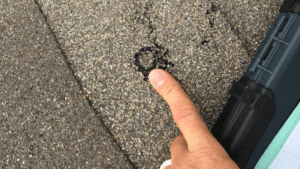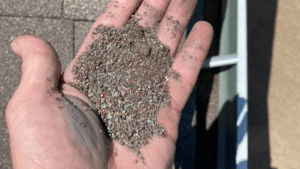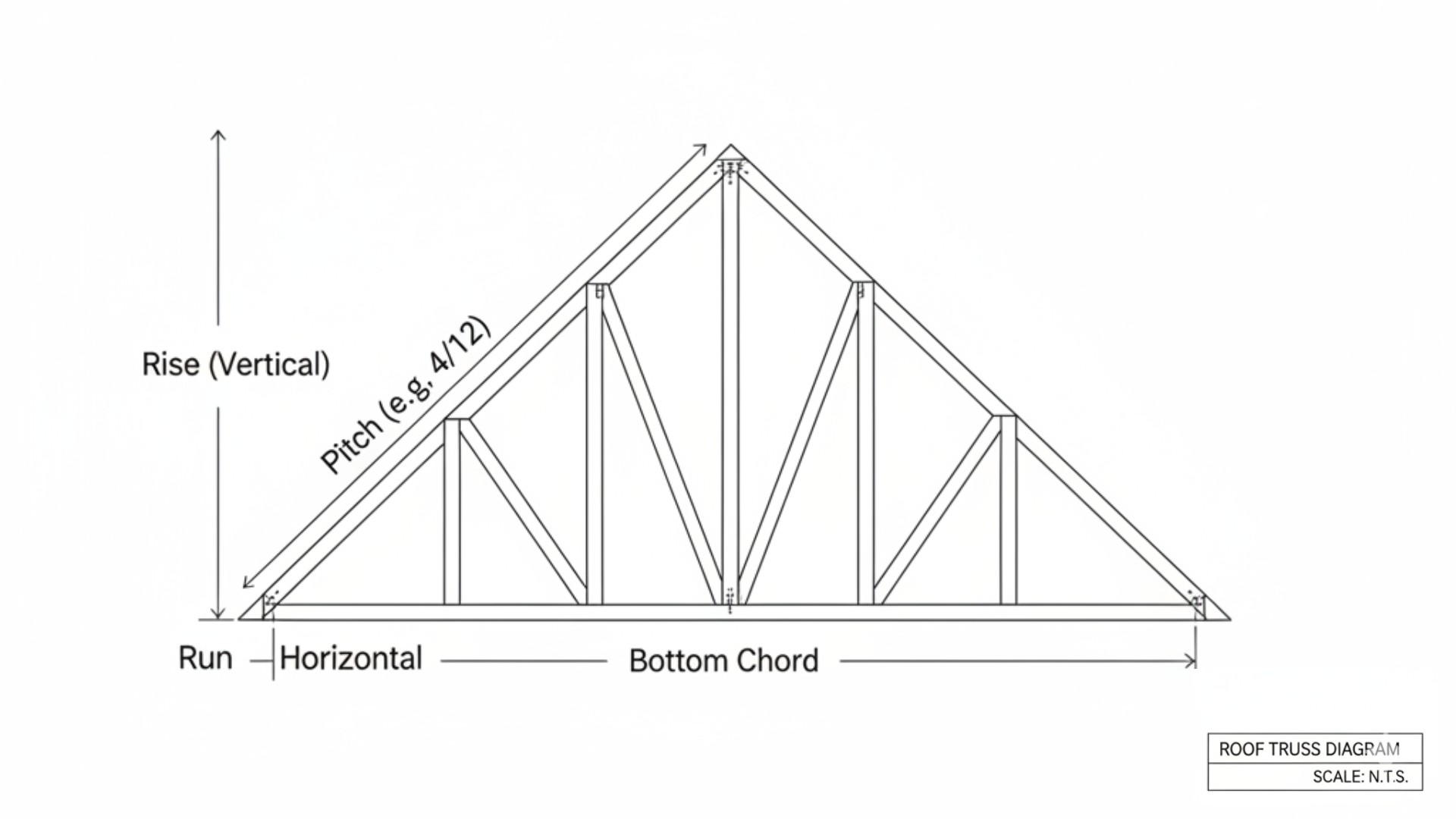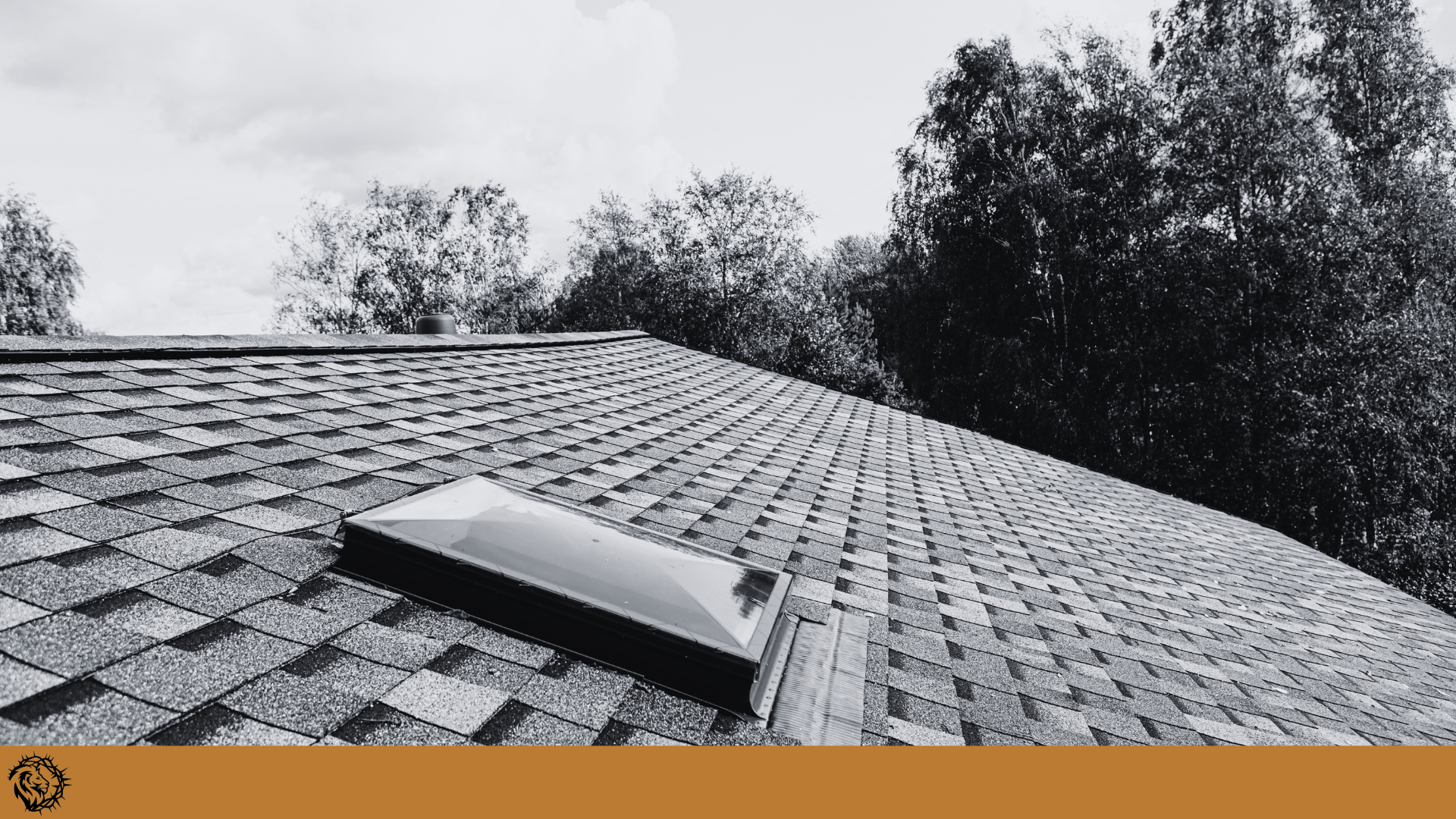In Bryan, TX, severe weather isn’t a possibility; it’s a predictable event. The anxiety that comes with every hail or high-wind warning is a shared experience for homeowners. You’re left wondering what the storm left behind, and the uncertainty of hidden damage can be incredibly stressful. Is my roof okay? What if there’s a leak I can’t see? What’s the first step I should take?
At RocStout Roofing, we believe in replacing that uncertainty with a clear, predictable process. Our “No Surprises” approach is designed to give you a definitive assessment of your roof’s condition, so you know exactly where you stand. This guide will walk you through how storms affect your roof and outline the precise steps to take for a confident recovery.
The Anatomy of Hail Damage: What Our Experts Look For
Hail damage is often subtle and nearly impossible to assess accurately from the ground. What may look like a minor issue can be a significant threat to your roof’s integrity. Our trained inspectors conduct a systematic evaluation, looking for specific signs of hail impact.
-
Granule Loss: Hailstones act like sandpaper, scouring away the protective granules on your shingles. This exposes the underlying asphalt mat to UV rays, which rapidly accelerates the aging process of the shingle.
-
Shingle Bruising: You may not see a crack, but hail can create a “bruise” or soft spot in the asphalt. This weakens the shingle and creates a potential entry point for water.
-
Cracking and Fracturing: Larger hailstones can physically crack or shatter the shingle, creating an immediate and obvious breach in your roof’s defense.
-
Damage to Metal Components: We meticulously inspect soft metals like vents, flashing, and gutters for dents and dings, which serve as clear evidence of the storm’s intensity.
Left unaddressed, these issues can easily lead to the need for extensive roof repair or even premature failure of the entire system.

The Unseen Power of Wind: How It Compromises Your Roof
High winds attack a roof’s most vulnerable points, and the damage is often a chain reaction. One small failure can lead to a catastrophic problem if not identified and corrected.
-
Broken Seals: The most common wind-related issue is the breaking of the factory-applied sealant that bonds your shingles together. Once this seal is compromised, the shingle is susceptible to lifting.
-
Shingle Uplift and Creasing: When wind gets under a shingle with a broken seal, it can lift and bend it back, creating a permanent crease. This crease is a weak point that will eventually crack and fail.
-
Missing Shingles: A powerful gust can rip a lifted shingle completely off the roof, leaving the underlayment and decking exposed to direct rainfall and creating an immediate leak.
The RocStout “No Surprises” Post-Storm Process
After a severe storm passes, your first instinct may be to worry or rush to file an insurance claim. We provide a clear, methodical alternative designed to protect your home and your interests.
-
Safety First: Stay on the Ground. Never climb onto a potentially damaged and slippery roof. An inspection is a job for trained and properly equipped professionals.
-
Conduct a Ground-Level Assessment: Walk around your property and look for obvious signs of damage:
-
Shingles or pieces of roofing material in your yard.
-
Visible dents in your gutters, downspouts, or metal vents.
-
An accumulation of dark granules at the end of your downspouts.

-
-
Schedule a Professional Inspection: This is the most critical step. Contact us for a complimentary, no-obligation inspection. We will meticulously document all findings with photos and a detailed report.
-
Review Our Findings Before Calling Your Insurance: If damage is found, we will provide you with a comprehensive assessment. This expert documentation is invaluable when you initiate the insurance claims process, ensuring the adjuster has a clear and accurate picture of the damage from day one. In many cases, a full roof replacement is justified, and our detailed report is key to getting it approved.
Proactive Protection: A Smarter Approach to Roofing in Bryan
While you can’t control the weather, you can choose a roofing system designed to withstand it. For homeowners looking for the highest level of protection, we often recommend investing in impact-resistant shingles or a standing seam metal roof. These materials are engineered to stand up to hail and high winds, offering superior long-term performance and peace of mind.
Your Path to Certainty After the Storm
Storms in Bryan are a predictable reality, but your response doesn’t have to be chaotic or uncertain. A process-driven approach provides the clarity you need to protect your most valuable asset. An expert inspection will determine the true condition of your roof, identify any hidden damage, and give you a definitive plan for moving forward.





